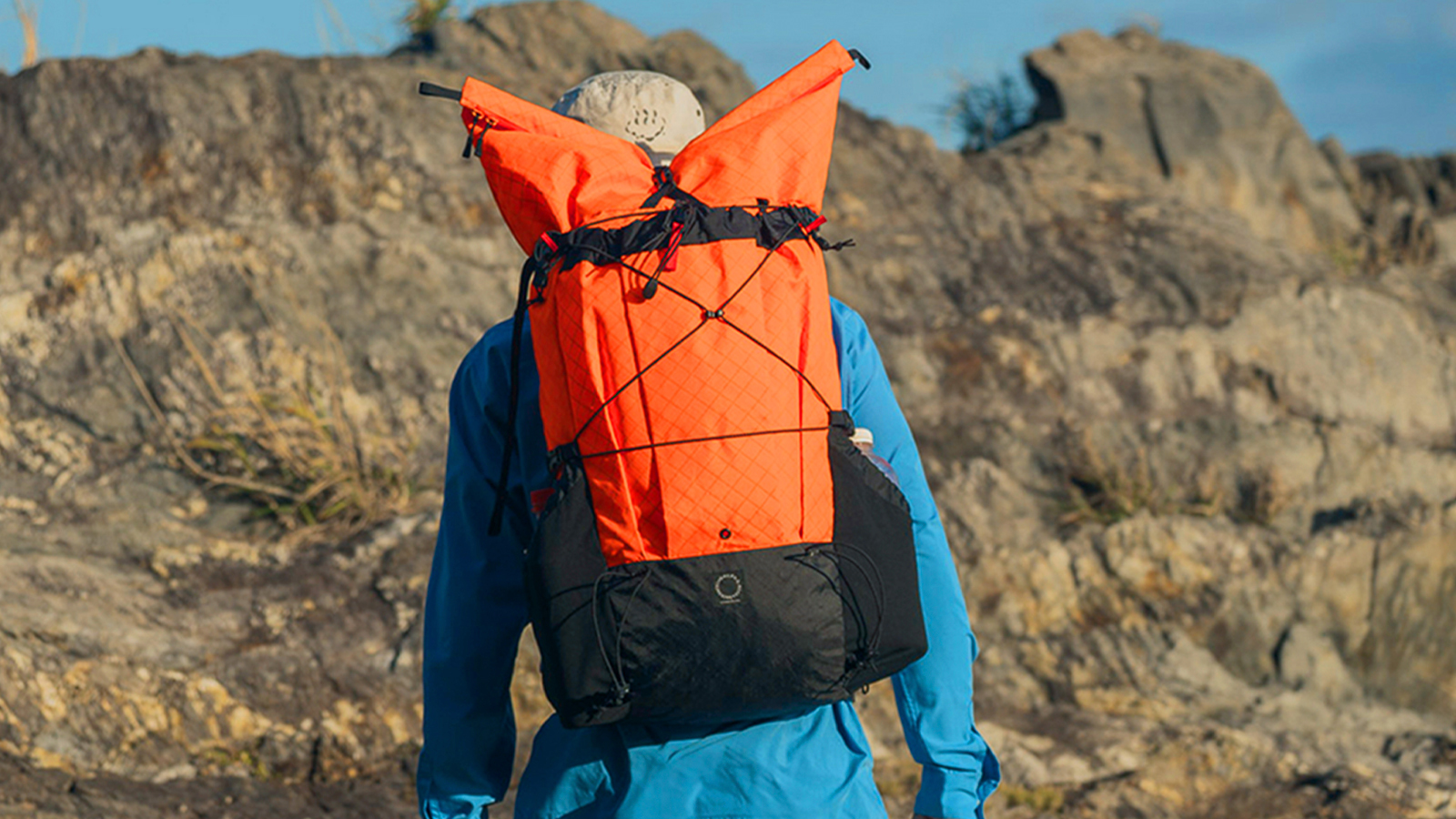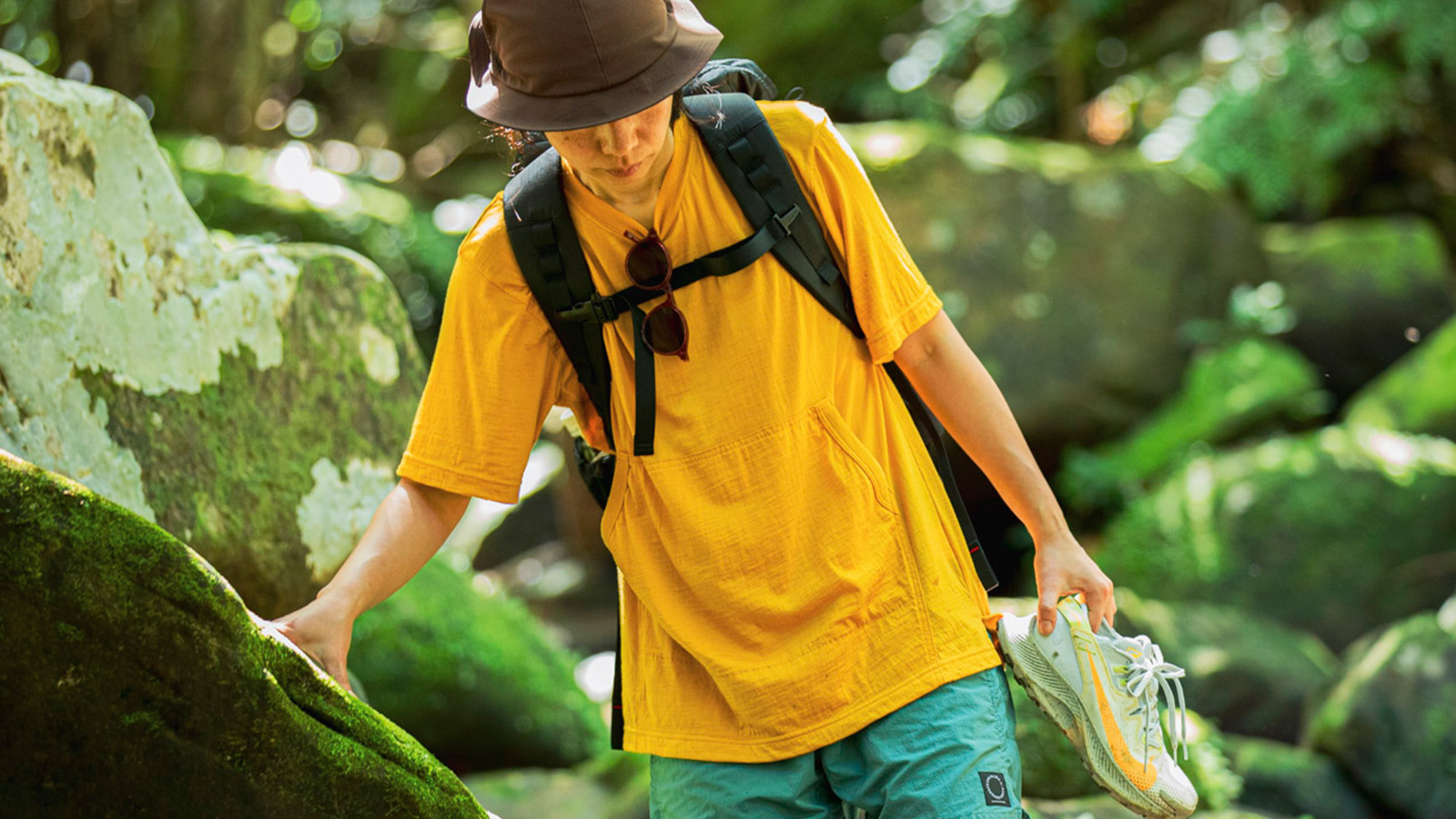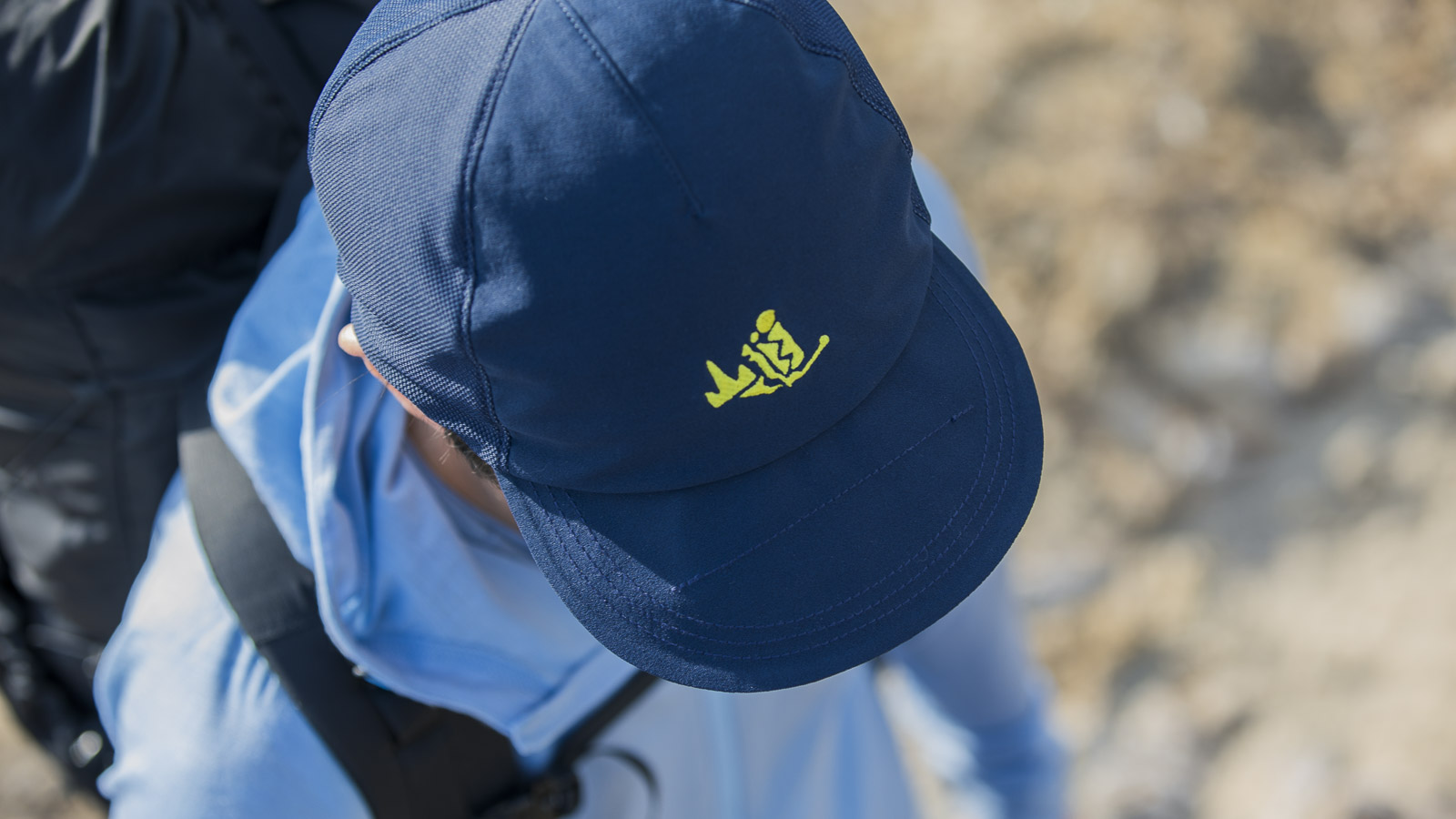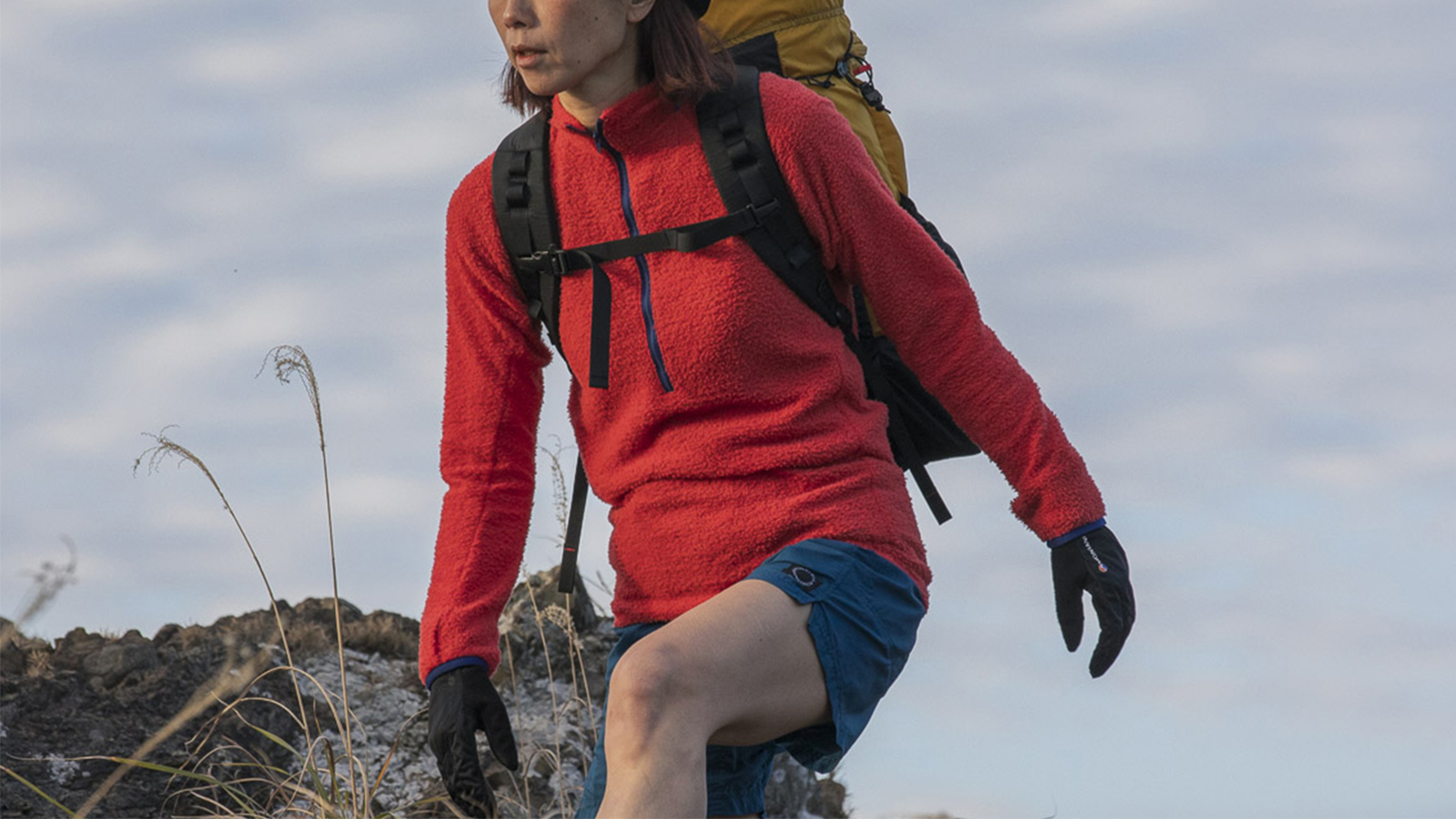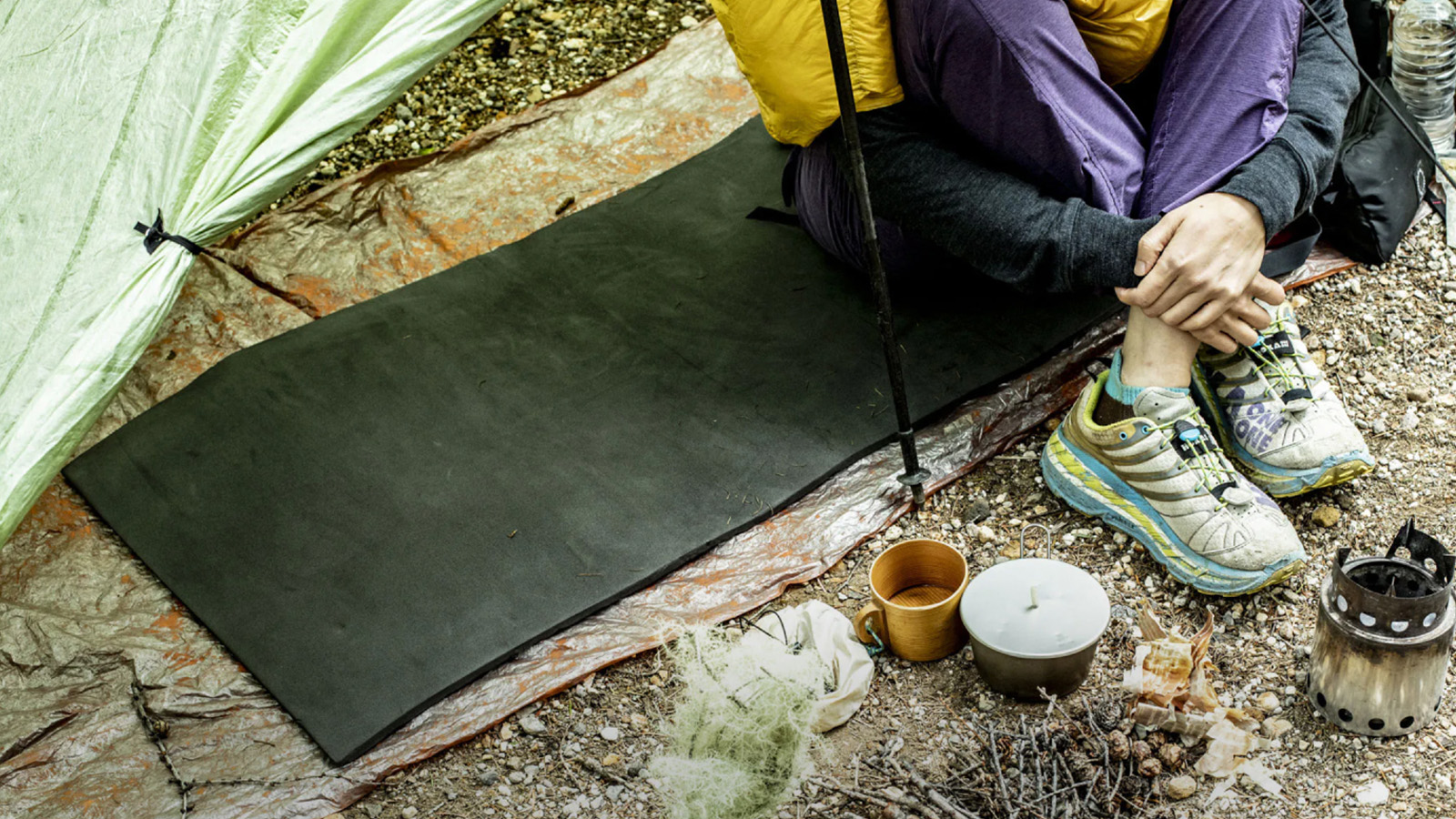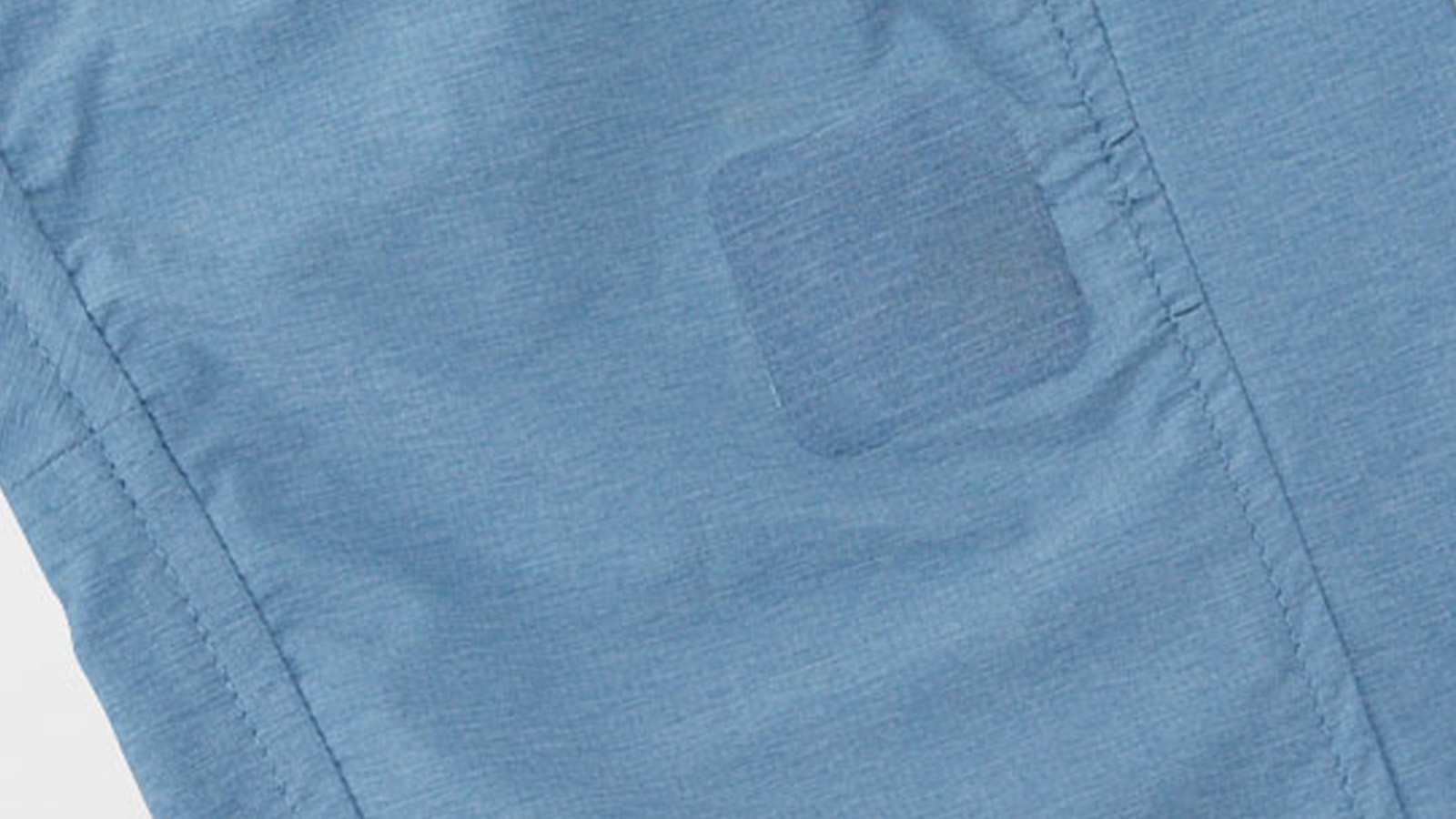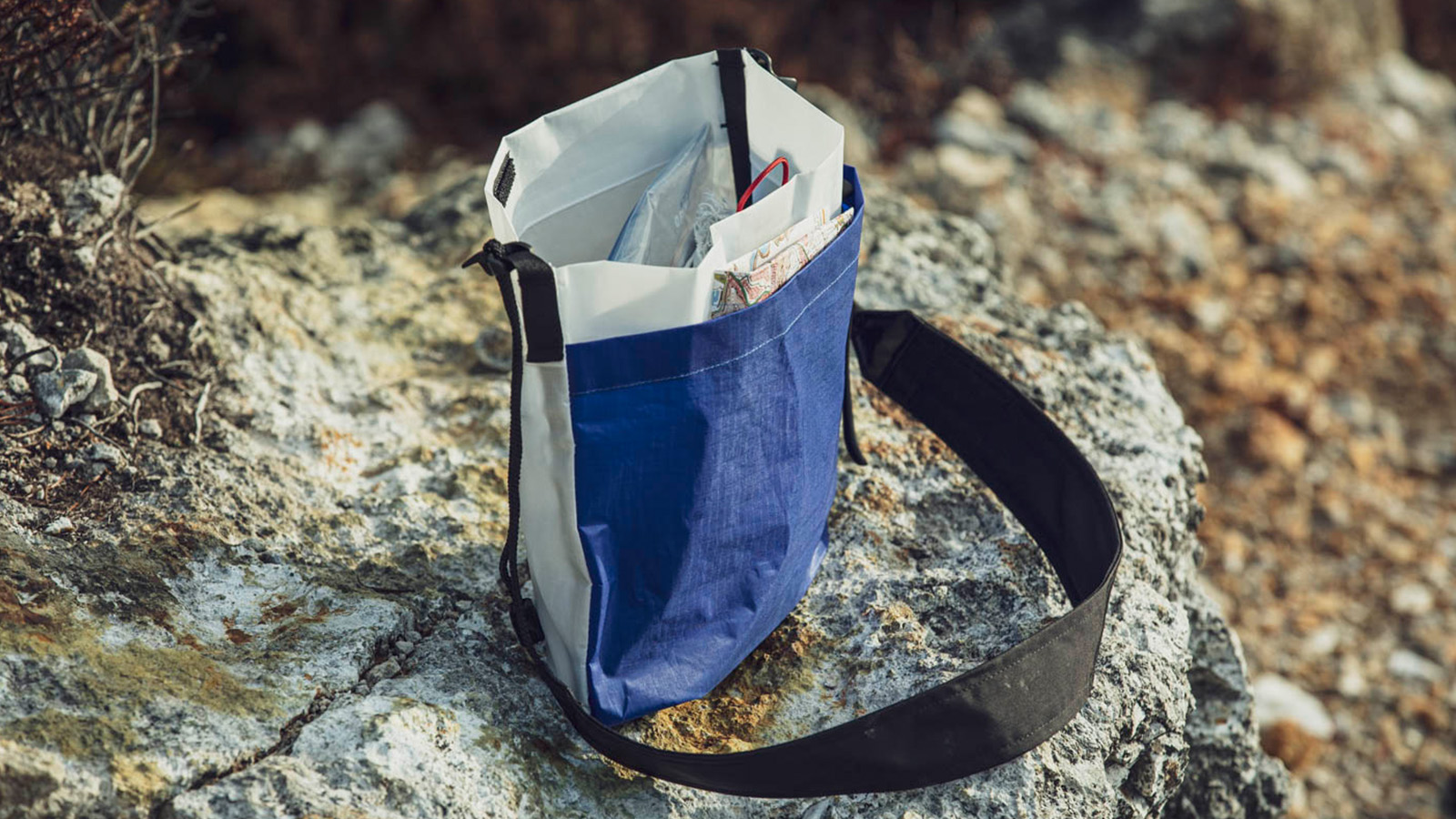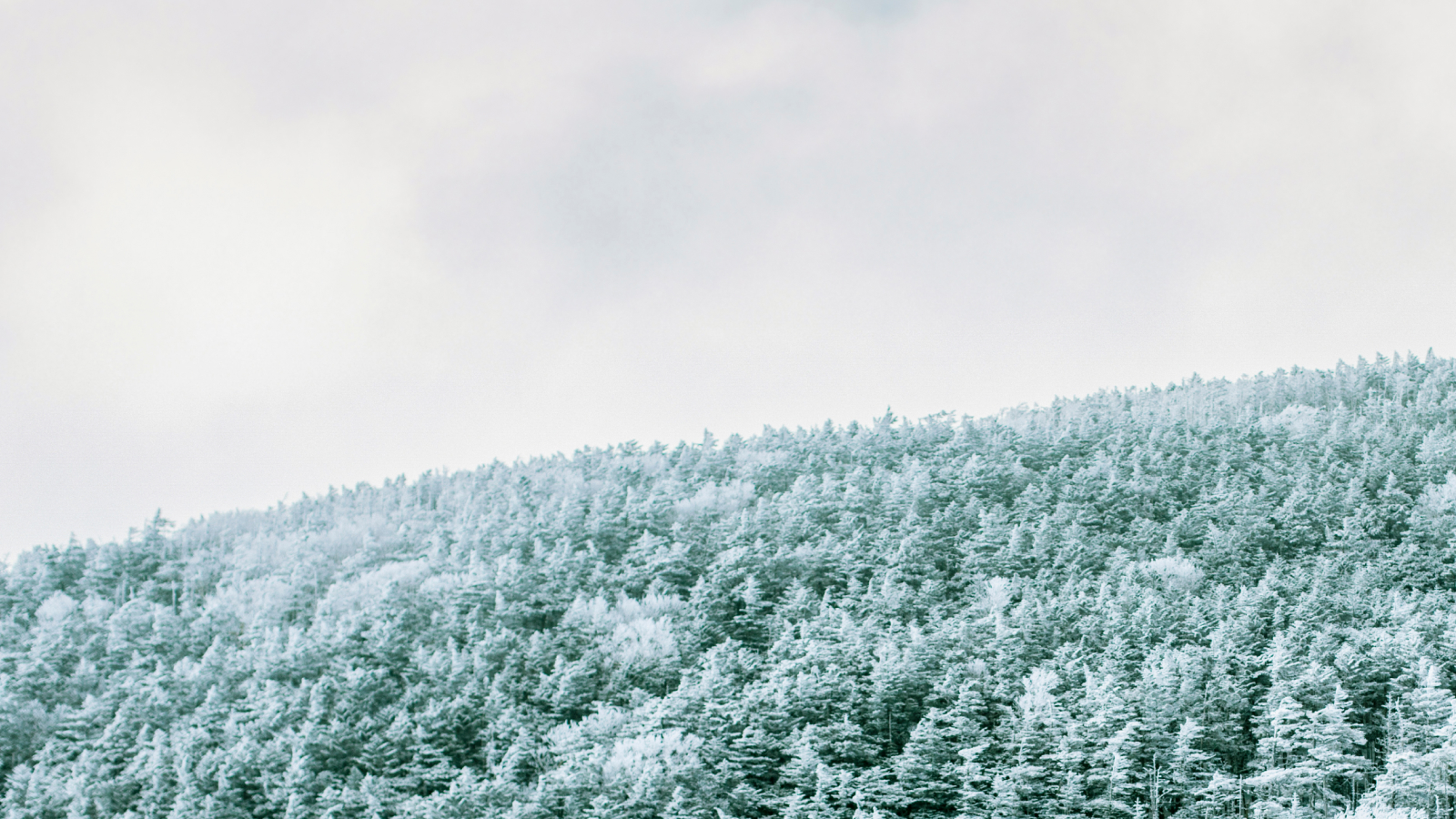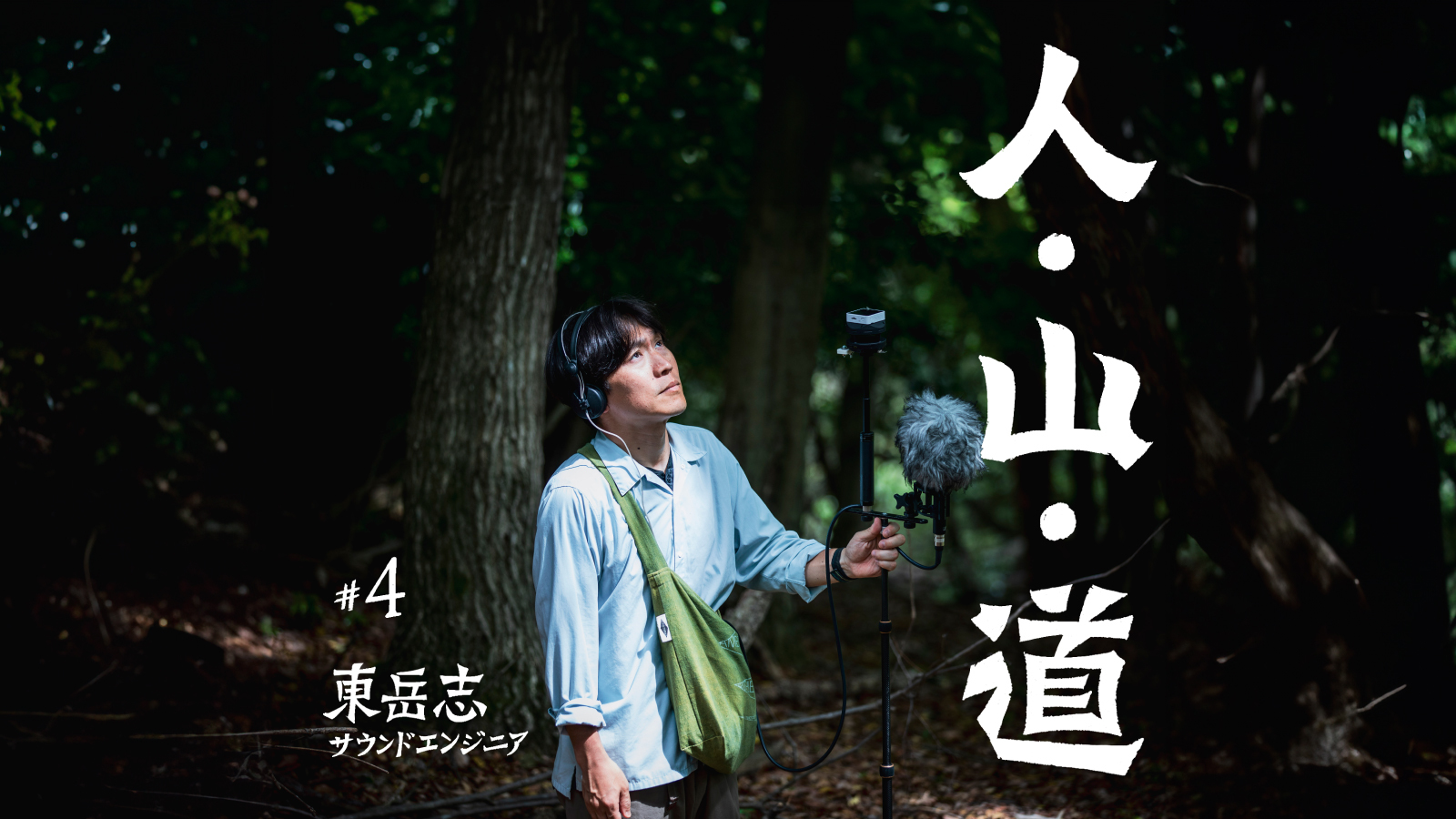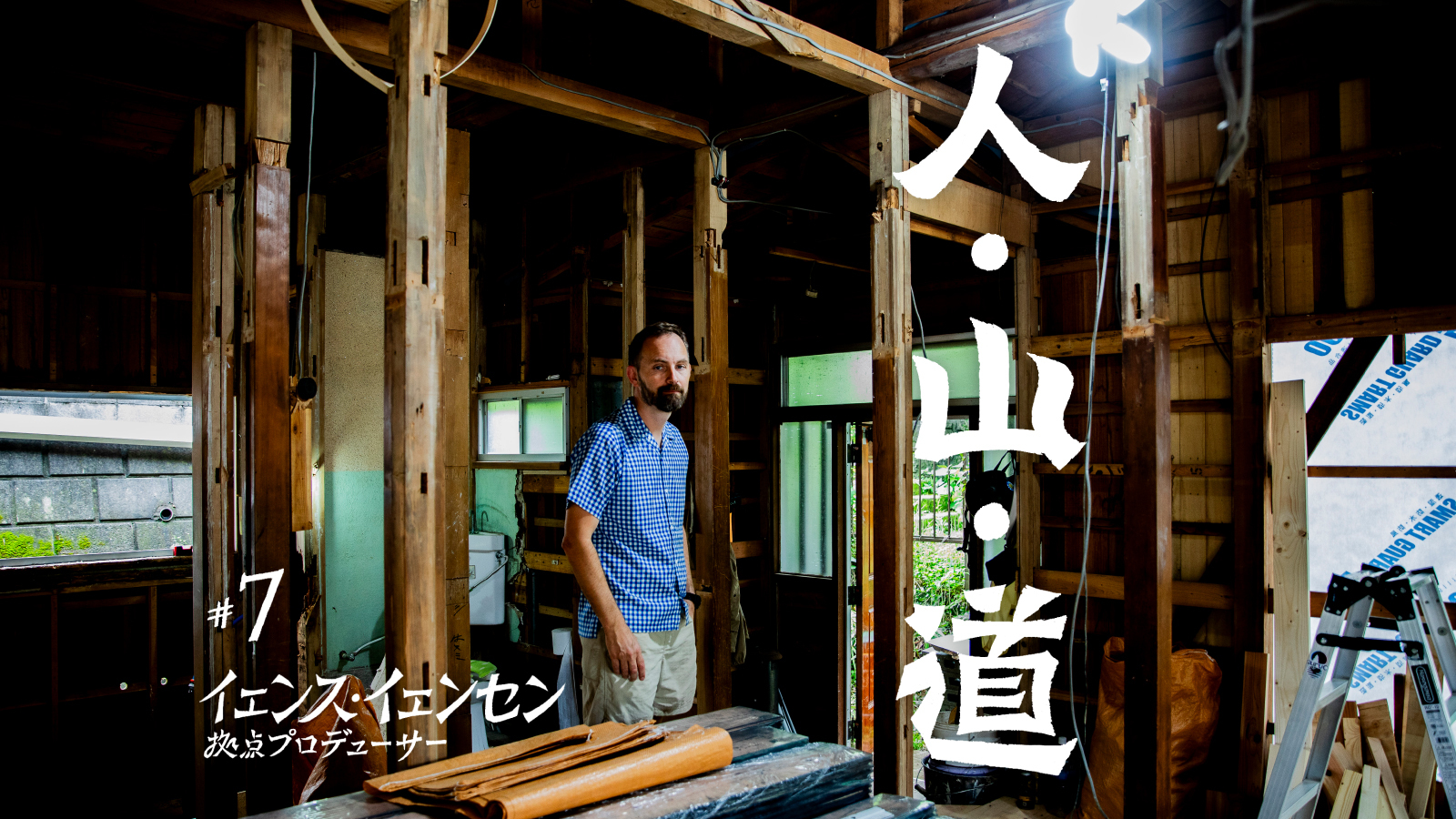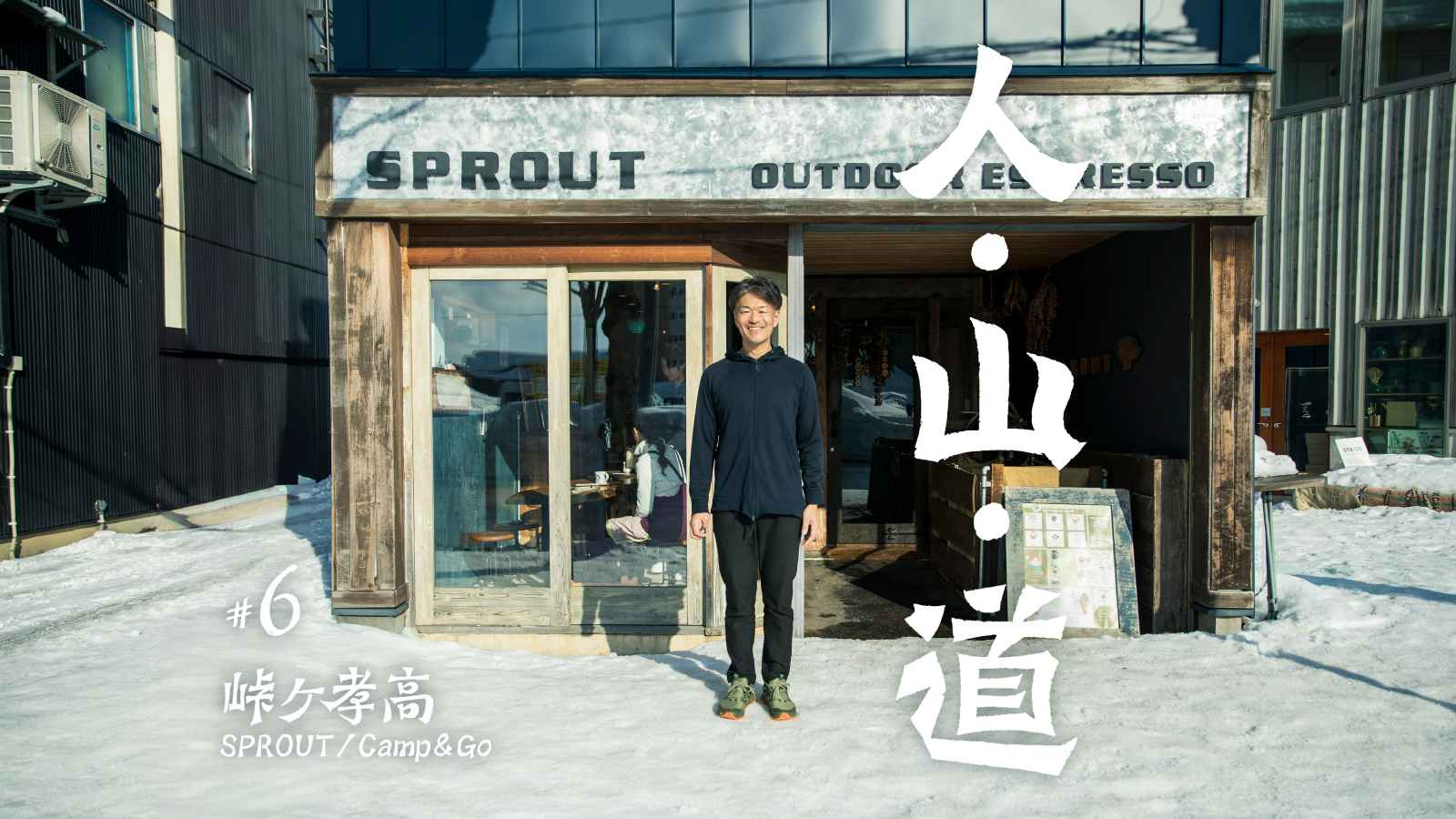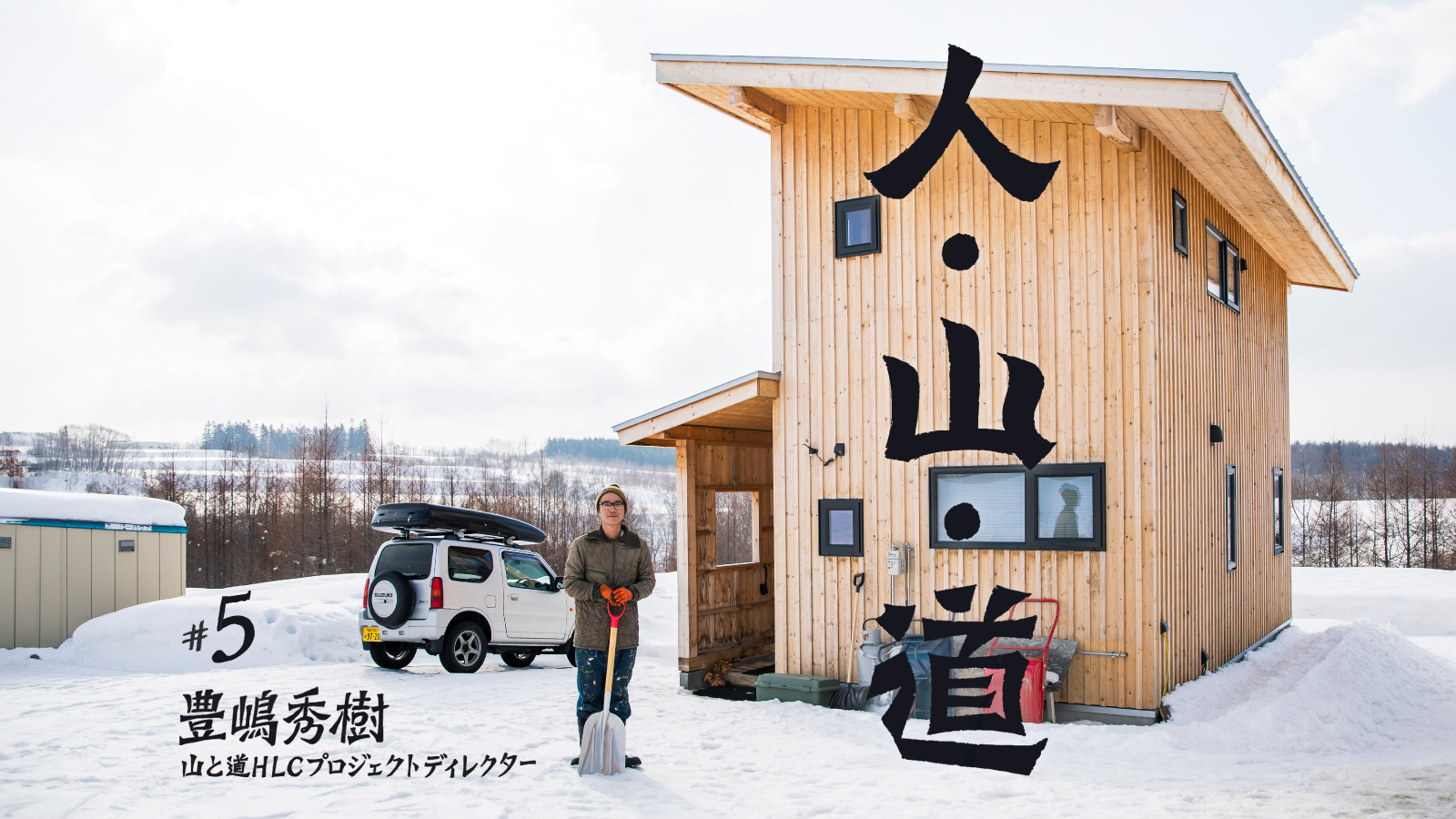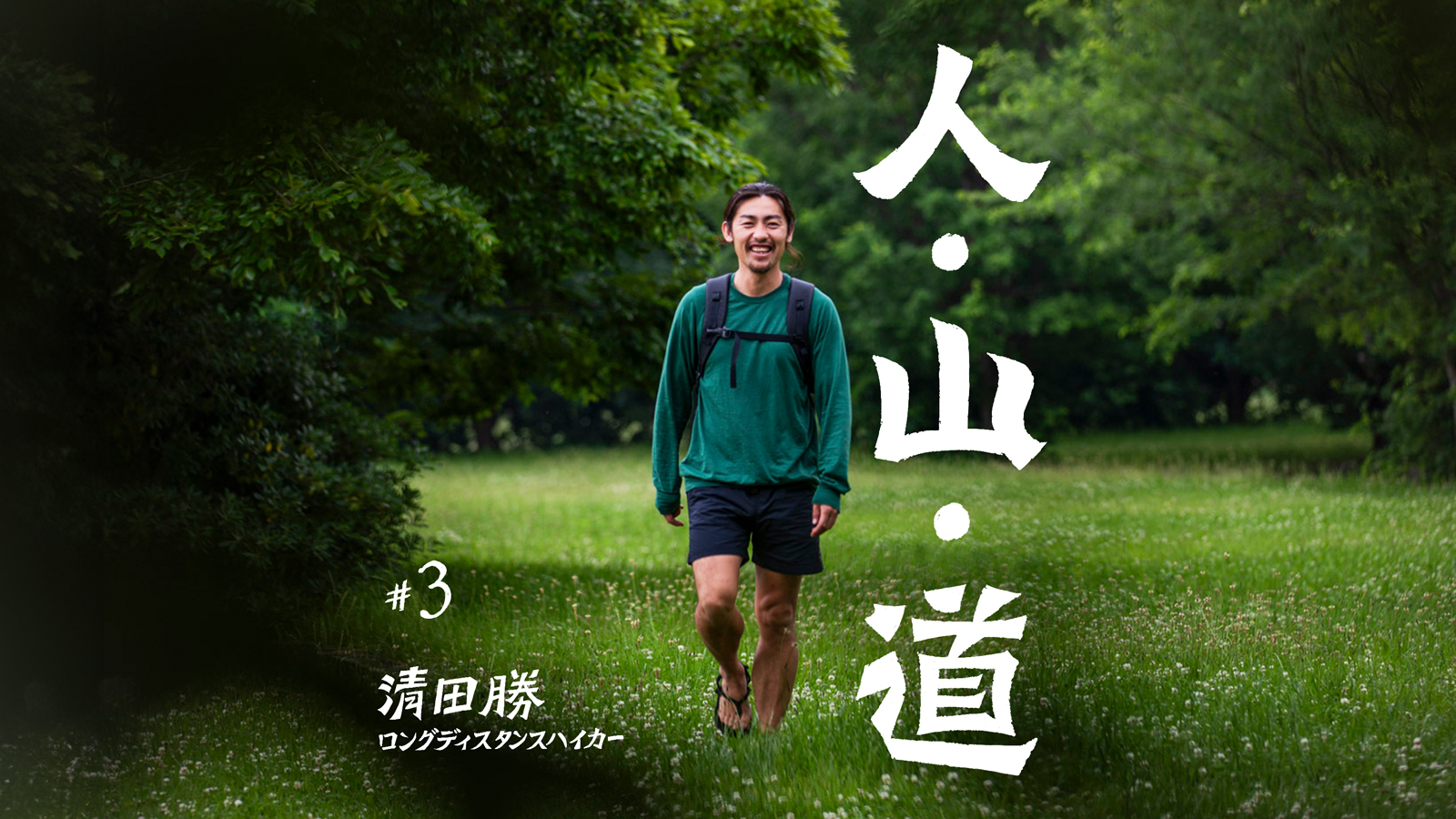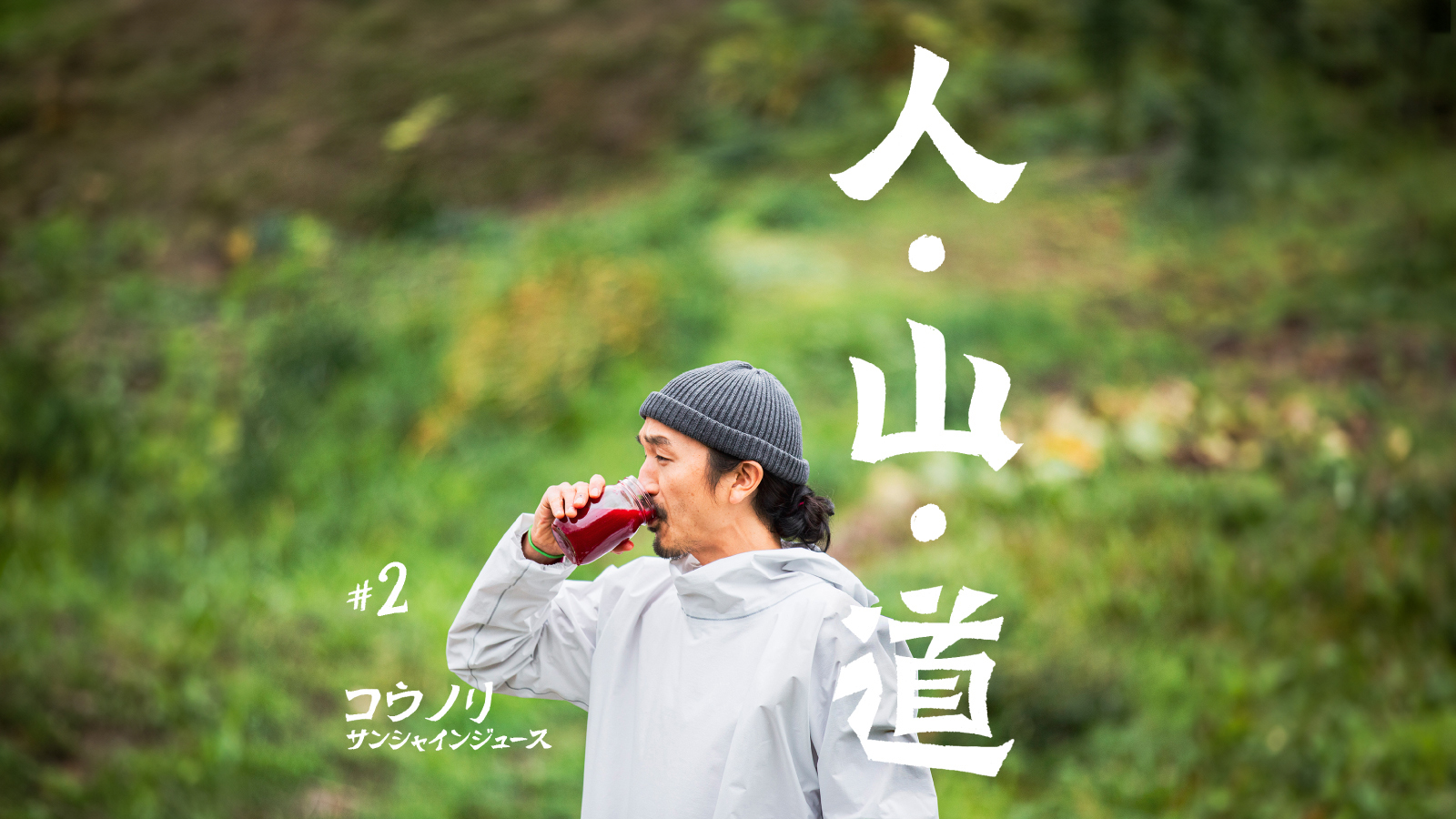#6 Yoshitaka Tōge(SPROUT / Camp&Go)
Photography: Masaaki Mita
#6 Yoshitaka Tōge(SPROUT / Camp&Go)
Photography: Masaaki Mita
In People, Mountains, Paths: The UL Way, we interview artists, designers, hikers and entrepreneurs whose lives and work intersect with Yamatomichi. We ask them how they chose the path they walk and the things they carry with them –– a theme that is at the core of the ultralight hiking ethos.
Our sixth guest is Yoshitaka Tōge, the owner of coffee roastery and cafe SPROUT and retail complex Camp&Go, in Kutchan, Hokkaido, Japan's northernmost prefecture; a Yamatomichi HLC Hokkaido ambassador; and a key figure in the community of outdoors enthusiasts living and visiting the wilderness surrounding Niseko's ski resorts.
Nature, coffee and life

A few years ago, Yoshitaka Tōge was backcountry skiing and camping with four friends when one of them happened to mention Camp 4. They were in the Niseko mountains, in Hokkaido, Japan’s northernmost main island, following the Niseko Haute Route, a 40-km (25-mi) trail of rustic hot springs, lava domes and rocky peaks stretching from Mt. Niseko-An’Nupuri to the Sea of Japan. The trip was an annual tradition, a chance for them to reconnect and share new ideas while traversing peaks in leather booths attached to narrow skis with telemark-style bindings. Over dinner one night, Yoshitaka explained how he wanted to expand on what he’d built at his coffee roastery and cafe SPROUT.
Since he’d opened SPROUT in Kutchan (population 15,000) in 2009, it had become a popular local spot among skiers, hikers, campers and climbers drawn to the region’s wilderness. For many residents and visitors, SPROUT was more than just a caffeine pitstop; it was the nexus of a community that openly welcomed newcomers. Recently, the building next door to SPROUT had been torn down. It seemed the perfect opportunity for Yoshitaka to try something new: a place where locals could draw on their skills to “give back” to the community and create a gateway for visitors.
“That sounds like Camp 4,” one of his friends said.

SPROUT opens at 8 a.m. In the winter season, the roastery and cafe attracts an international crowd.
Camp 4's enduring influence
Yoshitaka knew about Camp 4 from magazines and photo books. The campground –– in Yosemite National Park, in Northern California’s Sierra Nevada mountains –– sits in the middle of Yosemite Valley, 1,200 m (4,000 ft) above sea level. In the early days of rock climbing, from the late 1940s to the early 1970s, Camp 4 was where the sport’s pioneering practitioners stayed in tents for next to nothing, trained on the valley’s granite walls and boulders and tested new equipment. The close-knit community that formed around the campfires there had such a defining influence on climbing that the spot was added to the US National Register of Historic Places in 2003. Today, Camp 4 attracts rock climbers from around the world.
Yoshitaka’s friends urged him to go. Maybe he’d even find something there to help him flesh out his vision for the empty plot next to SPROUT. Two months later, he was on his way to US, for a weeklong solo trip to the Yosemite Valley.
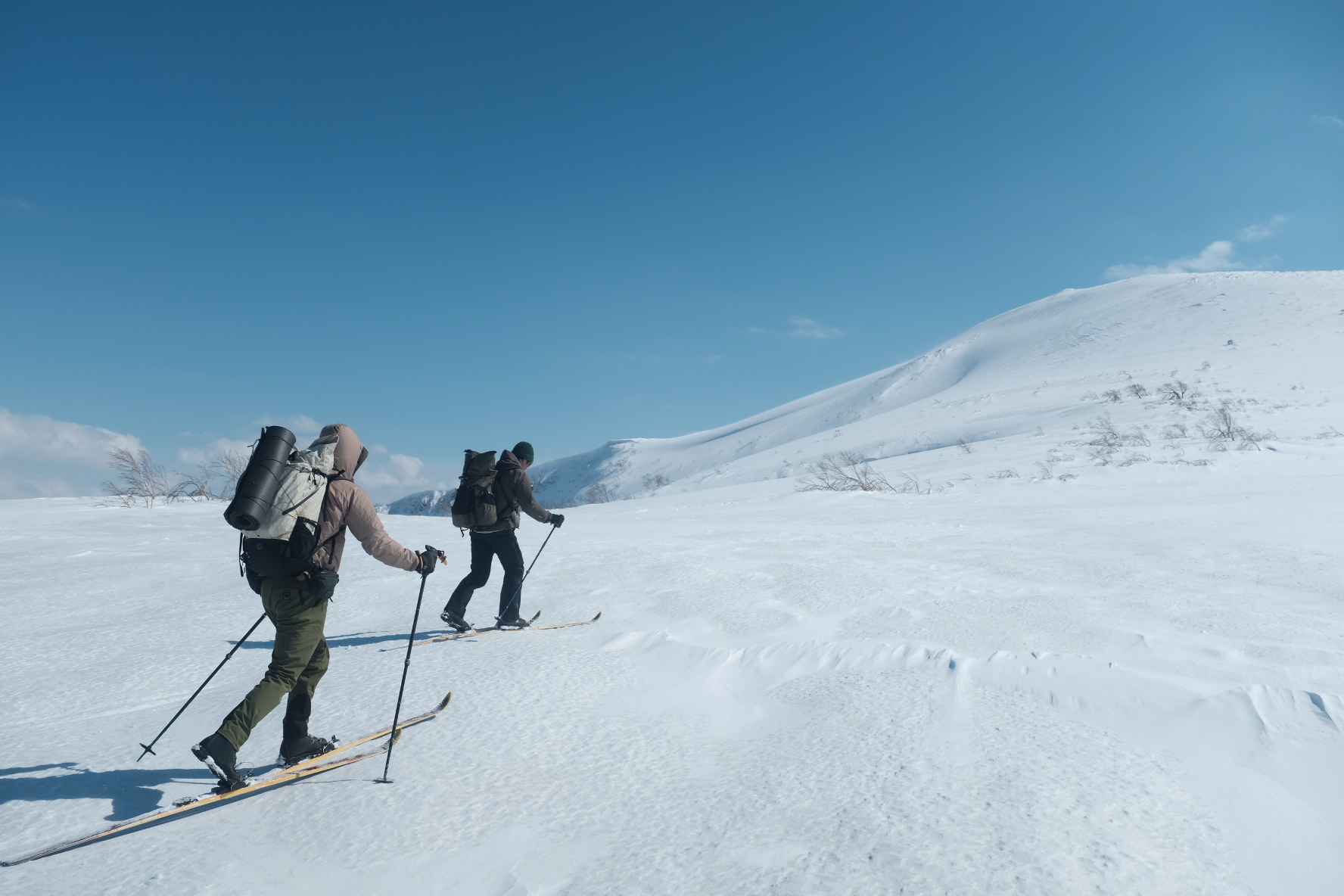
Since 2015, Yoshitaka’s group has traversed the Niseko Haute Route in leather boots attached to narrow skis with telemark-style bindings. (Photo credit: Yoshitaka Tōge)
When Yoshitaka arrived at Camp 4, two groups were already there: a trio of climbers from Colorado and a hiker couple. “They invited me to dinner and even served dessert. When I tried to help clean up, they said, ‘No, you’re the guest today. Sit down and relax.’ And then they said: ‘From tomorrow, you’re one of us here at Camp 4.’ That really stuck with me,” he said. Every day after that, they all shared their plans and destinations. When they left at the end of the week, they told Yoshitaka: “Now it’s your turn to welcome the next new campers.”
Camp 4’s culture –– new arrivals being warmly welcomed and continuing the hospitality for the next wave of newcomers –– became the foundation for Yoshitaka’s new venture in Kutchan. In December, 2019, he opened Camp&Go, a retail complex and gallery next to SPROUT that serves as a community hub. Earlier this year, he added a guesthouse. “Many people who come to Niseko are drawn by the allure of the natural landscape. They arrive here as guests, but they later become the hosts for those who come after them,” he said.
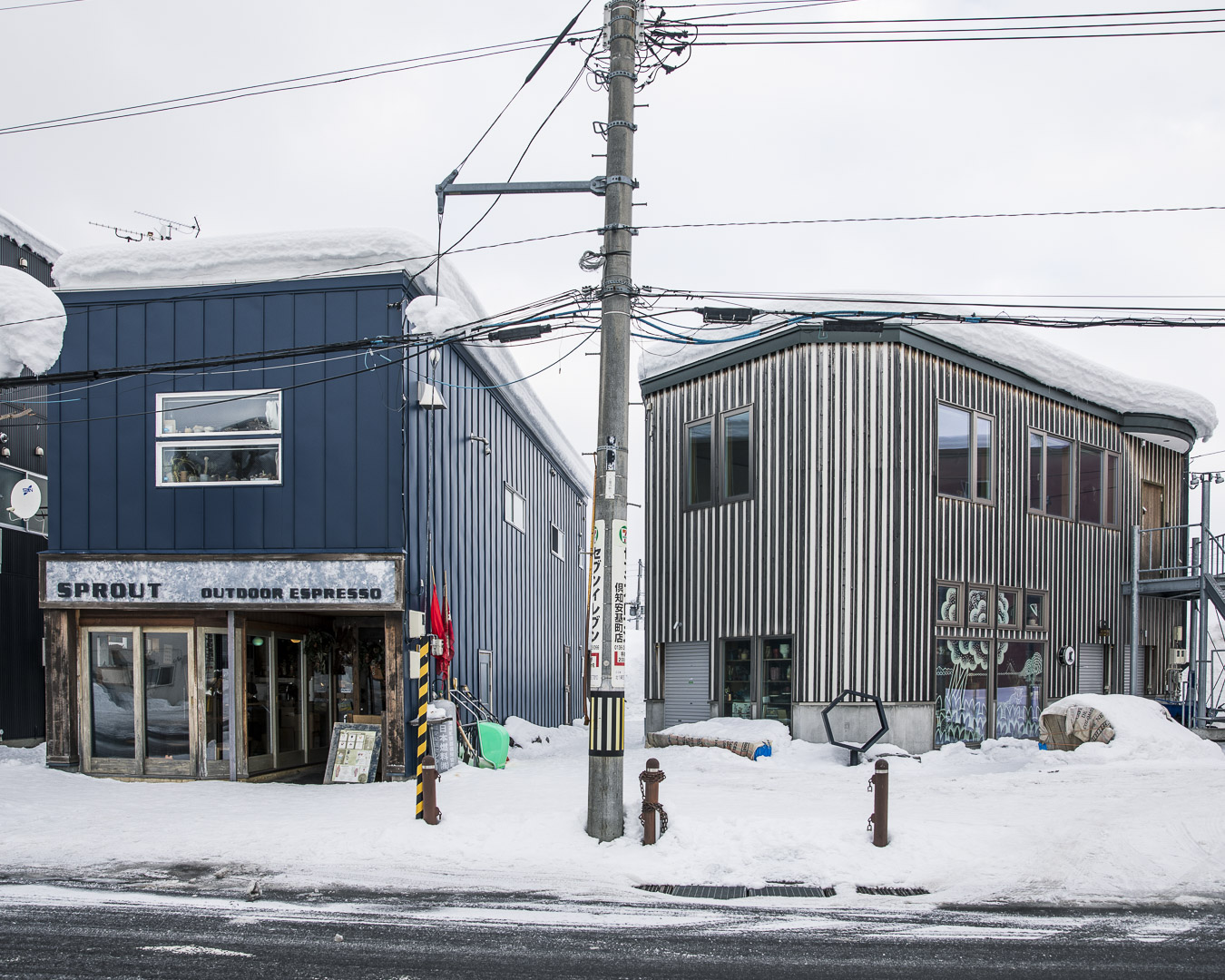
Camp&Go (right) is located next door to SPROUT. Besides an outdoor gear shop, a natural food store and a gallery space, Camp&Go also runs a guesthouse, which opened in Spring, 2025.
LOGBOOK: a record of the Niseko lifestyle
When Yoshitaka opened Camp&Go, he also launched a new magazine: LOGBOOK. Published twice a year, in winter and summer, it’s a repository of locals’ stories, and Yoshitaka works on it with a small team of writers, illustrators, photographers and other creatives living in the Niseko area. The magazine’s name comes from Yoshitaka’s habit of keeping records –– water levels and other tidbits –– while kayaking. “I wanted to create a similar kind of record for this place,” he said. He’d floated the idea with Yamatomichi HLC’s project director Hideki Toyoshima, who lives in nearby Makkari village. Hideki signed on as editor-in-chief and writer, and helped mobilize friends to make it happen.
“In the five years since the debut issue, LOGBOOK has matured. But something we’ve always valued is the idea of ‘serious play’,” said Yoshitaka. It’s a commitment to –– a focus on –– whatever form of recreation you’ve chosen to participate in. Something as simple as tag can stop being fun if someone sulks or loses interest in the game, he said.

SPROUT and Camp&Go are located near Kutchan Station. From here, Yoshitaka Tōge, who moved to the area in 2004, has seen Niseko undergo big changes.
Telemark skiing and the ultralight mindset
Serious play sums up Yoshitaka’s approach to one of his favorite winter pursuits: telemark skiing. Telemark skis –– a late 19th century Norwegian invention –– use bindings that don’t lock down the heel, making them easier for sliding around on flat or uphill sections. The free-heel configuration is the reason for telemark skiers’ trademark bent-knee style of carving turns on descents.
With alpine skiing, it’s about bracing yourself as you slide down steep slopes, Yoshitaka said. Telemark skiing requires the opposite –– a nimble looseness. “My impression is that with telemark skis or narrow skis and leather boots, you have to let go of force and adapt accordingly. This relates to the ultralight hiking concept, which isn’t about taking it easy, or pushing through with brute force. It’s about thinking, devising and adapting to a situation,” said Yoshitaka, an HLC Hokkaido ambassador.
“In life, you adapt to every new situation –– not avoiding or escaping it by taking the easy route, but by choosing, through trial and error, the best option available to you,” he said. “By trusting the slope and letting gravity pull you down the mountain, you feel the terrain, the weather, the snow –– the conditions of that specific time and place. You also get a sense of your own mental and physical state.” It’s a way of “engaging in a dialogue with nature,” he added.
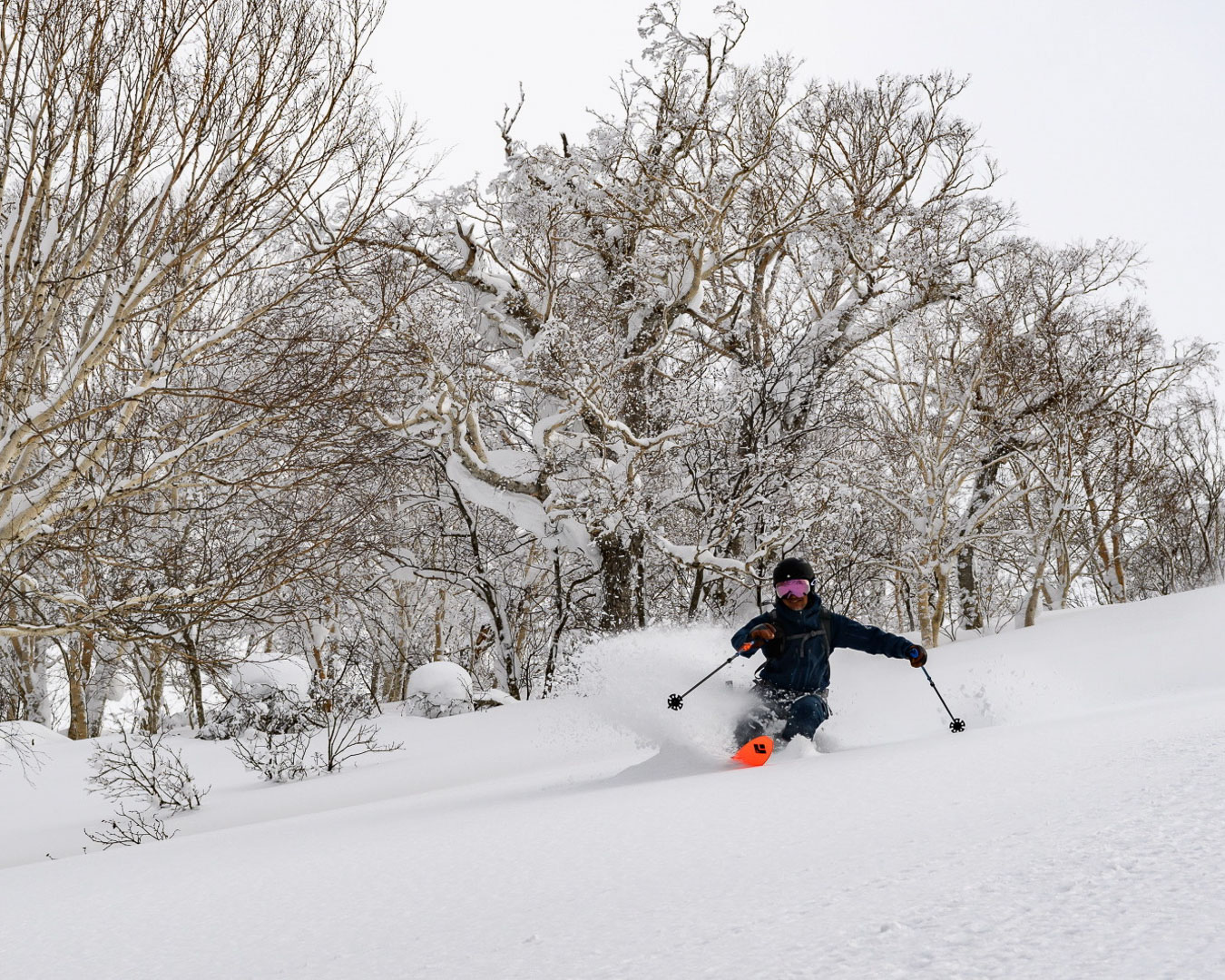
Photo credit:Masahiro Kanakusa
Coffee: a broader view
In the same way that Yoshitaka doesn’t think of Camp&Go as a straightforward commercial venture, he also takes a broader view of coffee. Roasting coffee beans requires constant adjustments –– to fluctuations in temperature and humidity and other environmental variables. He sees parallels to ultralight hiking.
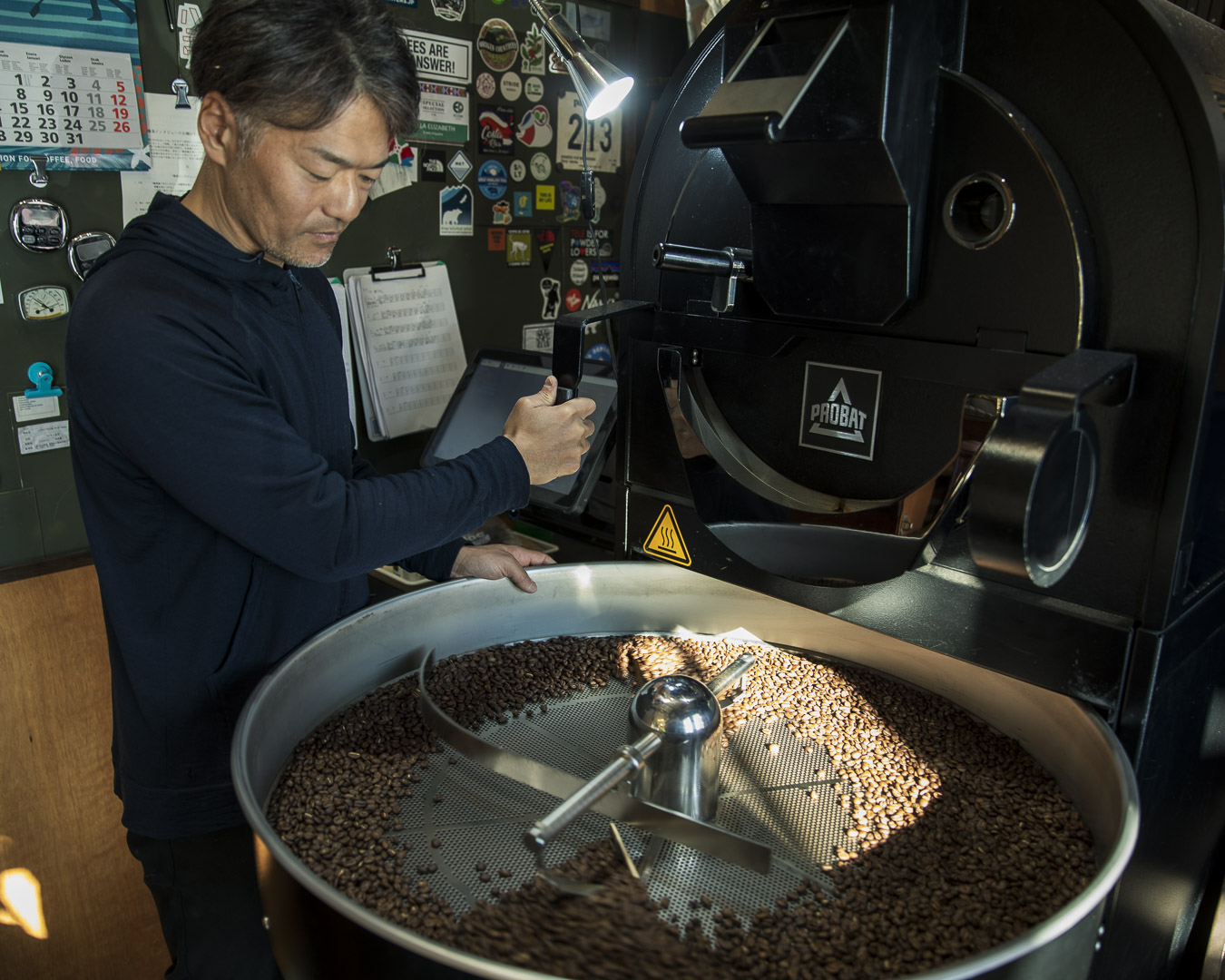
Yoshitaka compares roasting to skiing and kayaking. “You adjust yourself to the environment,” he said.
With every batch, Yoshitaka aims to draw out the unique character of the beans. His goal is a “clean cup” –– coffee free of off-flavors –– and he’s meticulous about checking everything, from growing and harvesting to drying, shipping and storing.
Last year, Yoshitaka began visiting farmers in Guatemala and Costa Rica. The trips deepened his love and understanding of coffee, but also added another dimension to the beans’ farm-to-cup journey. “I don’t want to just provide delicious coffee,” he said. “I want to faithfully convey the stories of the people involved in producing the coffee and, in turn, share the stories of those who drink the coffee with producers and everyone else involved.”


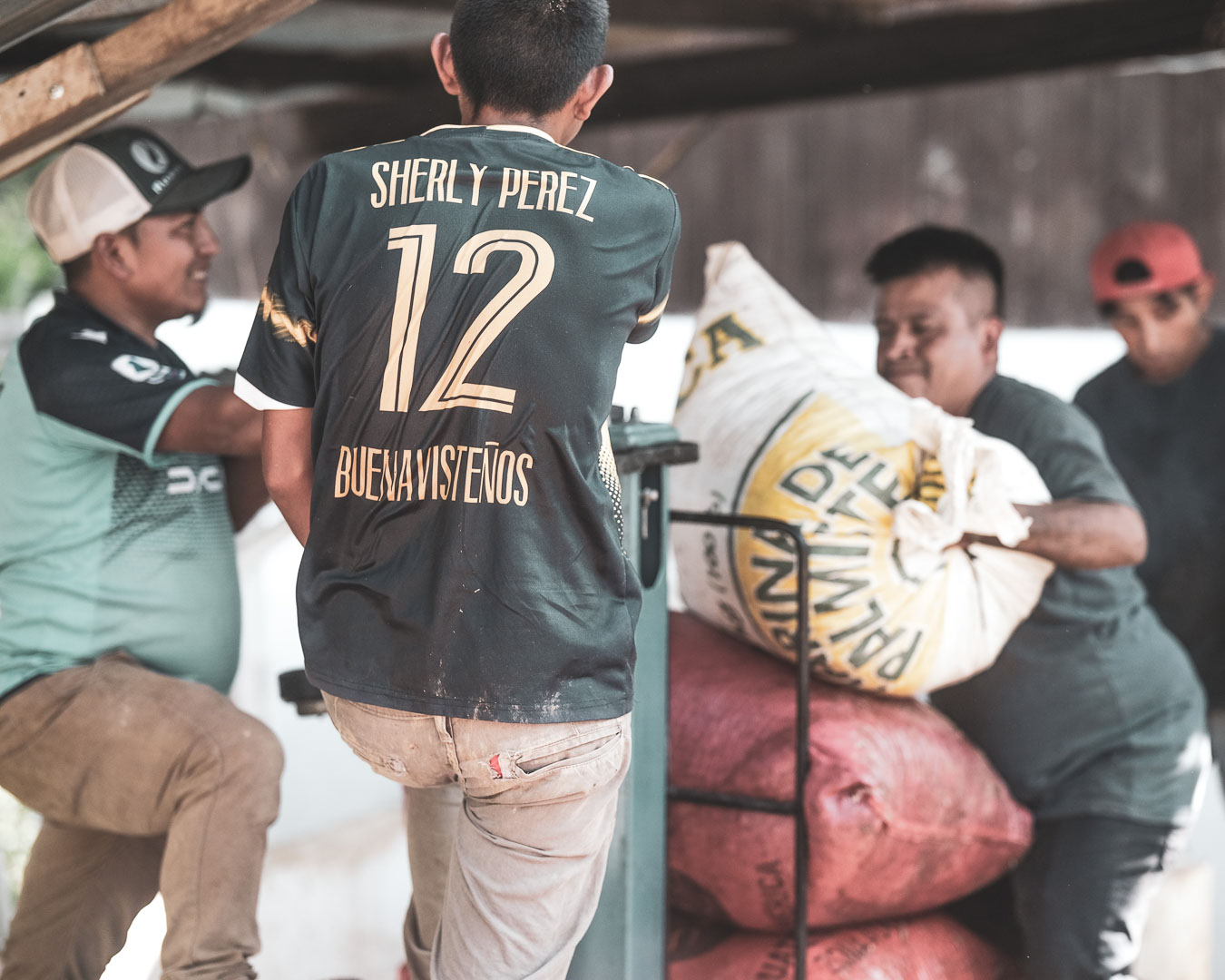

During his visits to coffee producers in Guatemala and Costa Rica in 2024, he listened to the farmers’ stories. (Photo credit: Yoshitaka Tōge)
Yoshitaka likes to think of the coffee business as a triangle –– producers, providers and consumers, each connected to the others. When Yoshitaka flew to Guatemala in March, he took gifts for the farmers: bags and fabrics dyed with coffee by a Japanese artisan. One day, he dreams that producers in Latin America and elsewhere will make a trip to Kutchan in winter.
“Most coffee-producing regions are warm climates. So when people see photos of coffee grown far away being enjoyed here in cold, snowy Kutchan, they’re amazed. It’s incredible how a cup of coffee can change so many lives,” he said.
SPROUT and Camp&Go's virtuous cycle
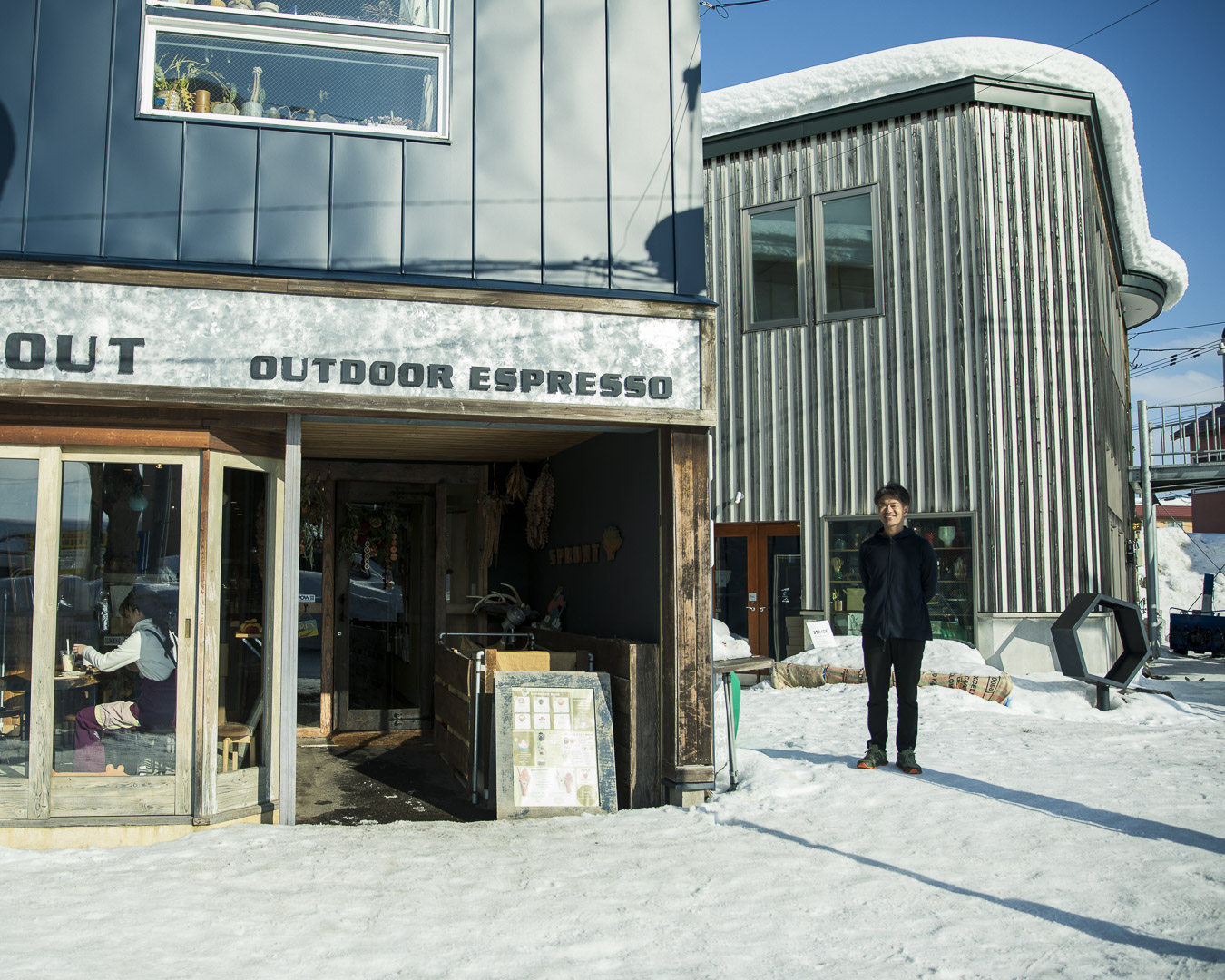
New discoveries are part of every visit to SPROUT and Camp&Go.
Over the past decade and a half, the Niseko area has gone from a sleepy backwater to one of Asia’s hottest ski resorts, sometimes called the Aspen of the East. New swanky condominiums, many owned by foreigners, and shops selling luxury goods and services have sprung up at the base of the mountain. Much of the investment has poured into Hirafu, a town of 800 that swells to the thousands in the winter.
Despite Niseko’s influx of money and tourists, the neighborhood around Kutchan Station has retained its low-key feel. “Kutchan isn’t just a resort destination –– many people actually live here. There’s a close connection between daily life and nature. In winter, people ski and snowboard. In summer, they explore the mountains and rivers,” said Yoshitaka.
SPROUT and Camp&Go have contributed to Kutchan’s strong local identity. After 15 years of SPROUT and five years of Camp&Go, Yoshitaka sees a quiet transformation taking root. “People who were once guests are now the ones welcoming others,” he says.
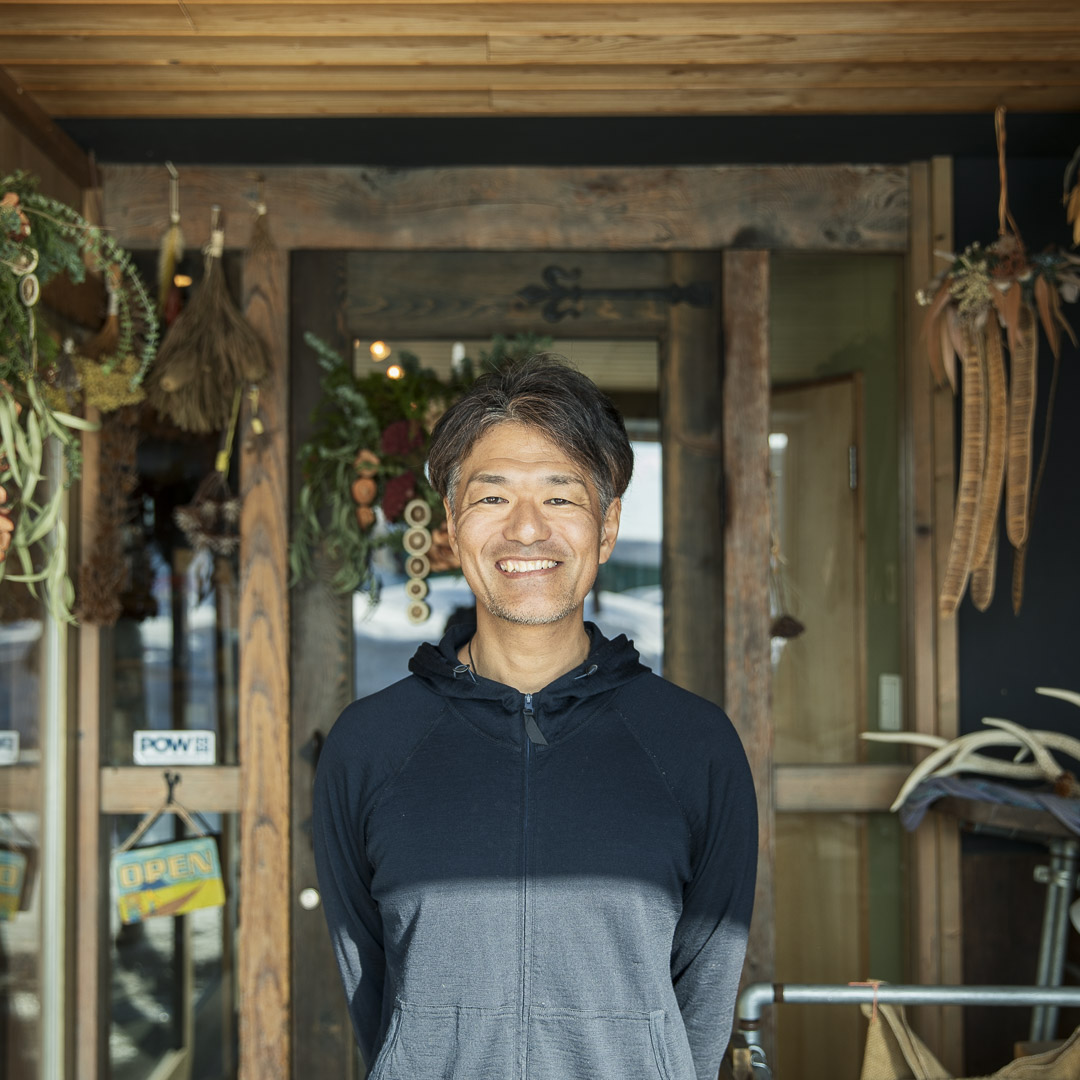
Born in 1979, in Chiba prefecture. In 2004, he moved to the Niseko area, in Hokkaido. After working as a kayak instructor and ski patrol, he opened SPROUT, a coffee bean roastery and cafe near Kutchan station, in 2009. It’s become a community hub for coffee and outdoor enthusiasts from all around Niseko. In 2019, he opened Camp&Go, a complex of shops and galleries, next door to SPROUT, and began publishing LOGBOOK magazine. He spends his free time trail running, telemark skiing and kayaking.







